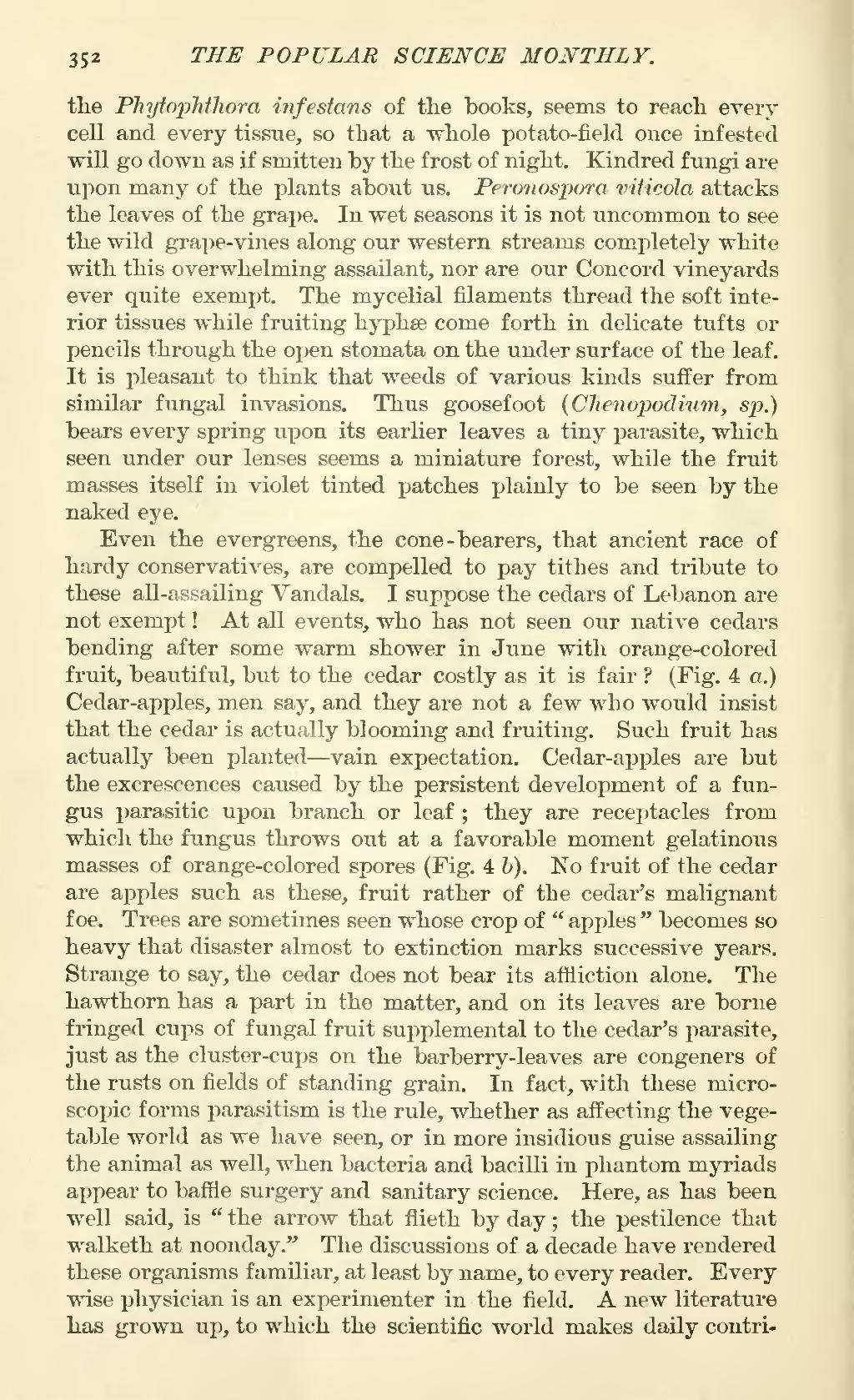the Phytophthora infestans of the books, seems to reach every cell and every tissue, so that a whole potato-field once infested will go down as if smitten by the frost of night. Kindred fungi are upon many of the plants about us. Peronospora viticola attacks the leaves of the grape. In wet seasons it is not uncommon to see the wild grape-vines along our western streams completely white with this overwhelming assailant, nor are our Concord vineyards ever quite exempt. The mycelial filaments thread the soft interior tissues while fruiting hyphæ come forth in delicate tufts or pencils through the open stomata on the under surface of the leaf. It is pleasant to think that weeds of various kinds suffer from similar fungal invasions. Thus goosefoot (Chenopodium, sp.) bears every spring upon its earlier leaves a tiny parasite, which seen under our lenses seems a miniature forest, while the fruit masses itself in violet tinted patches plainly to be seen by the naked eye.
Even the evergreens, the cone-bearers, that ancient race of hardy conservatives, are compelled to pay tithes and tribute to these all-assailing Vandals. I suppose the cedars of Lebanon are not exempt! At all events, who has not seen our native cedars bending after some warm shower in June with orange-colored fruit, beautiful, but to the cedar costly as it is fair? (Fig. 4 a.) Cedar-apples, men say, and they are not a few who would insist that the cedar is actually blooming and fruiting. Such fruit has actually been planted—vain expectation. Cedar-apples are but the excrescences caused by the persistent development of a fungus parasitic upon branch or leaf; they are receptacles from which the fungus throws out at a favorable moment gelatinous masses of orange-colored spores (Fig. 4 b). No fruit of the cedar are apples such as these, fruit rather of the cedar's malignant foe. Trees are sometimes seen whose crop of "apples" becomes so heavy that disaster almost to extinction marks successive years. Strange to say, the cedar does not bear its affliction alone. The hawthorn has a part in the matter, and on its leaves are borne fringed cups of fungal fruit supplemental to the cedar's parasite, just as the cluster-cups on the barberry-leaves are congeners of the rusts on fields of standing grain. In fact, with these microscopic forms parasitism is the rule, whether as affecting the vegetable world as we have seen, or in more insidious guise assailing the animal as well, when bacteria and bacilli in phantom myriads appear to baffle surgery and sanitary science. Here, as has been well said, is "the arrow that flieth by day; the pestilence that walketh at noonday." The discussions of a decade have rendered these organisms familiar, at least by name, to every reader. Every wise physician is an experimenter in the field. A new literature has grown up, to which the scientific world makes daily contri-
